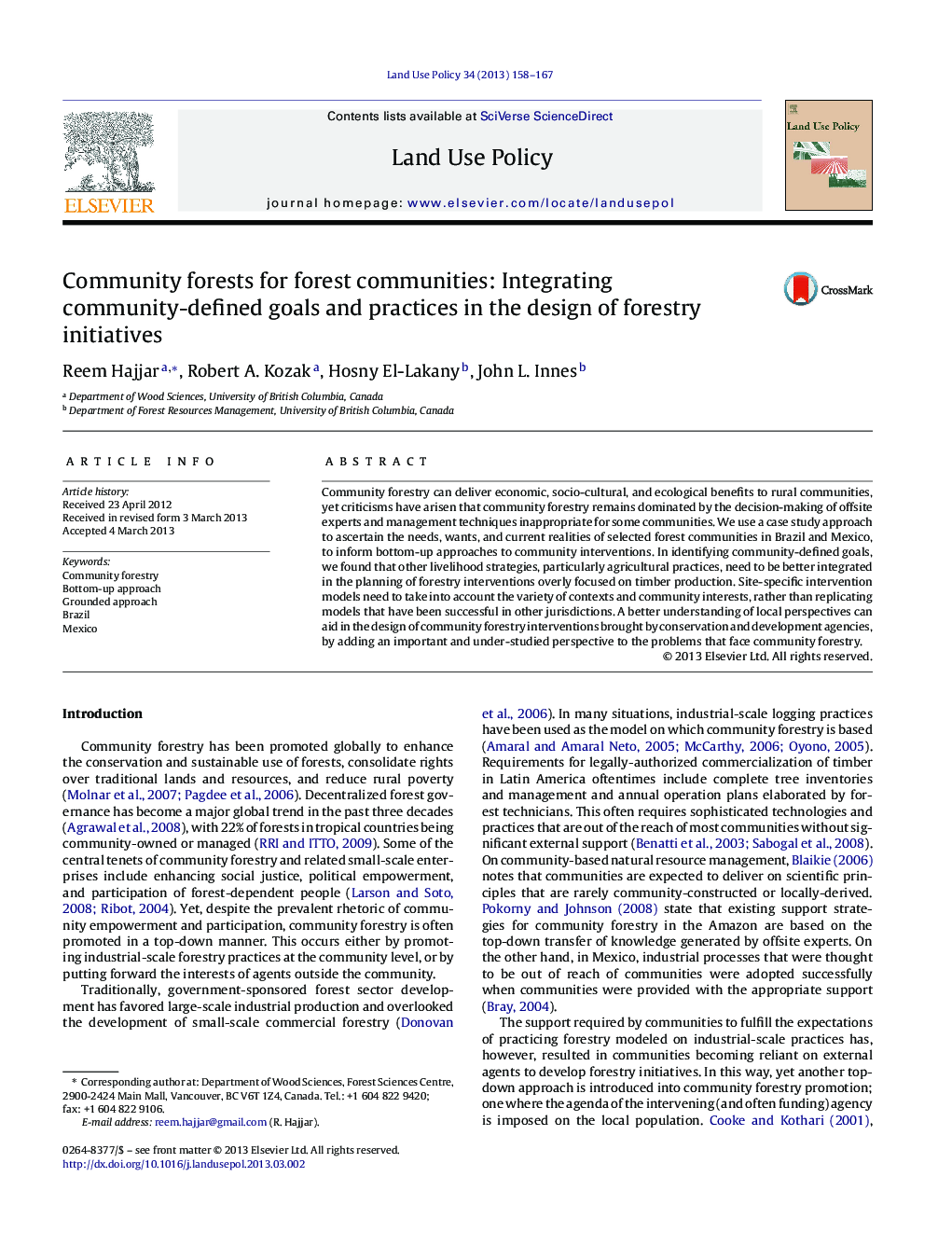| کد مقاله | کد نشریه | سال انتشار | مقاله انگلیسی | نسخه تمام متن |
|---|---|---|---|---|
| 93214 | 160117 | 2013 | 10 صفحه PDF | دانلود رایگان |
• Agricultural practices need to be integrated in community forestry interventions.
• Site-specific interventions should take into account contexts and community interests.
• Community-generated lists of priorities can be used to design project interventions.
Community forestry can deliver economic, socio-cultural, and ecological benefits to rural communities, yet criticisms have arisen that community forestry remains dominated by the decision-making of offsite experts and management techniques inappropriate for some communities. We use a case study approach to ascertain the needs, wants, and current realities of selected forest communities in Brazil and Mexico, to inform bottom-up approaches to community interventions. In identifying community-defined goals, we found that other livelihood strategies, particularly agricultural practices, need to be better integrated in the planning of forestry interventions overly focused on timber production. Site-specific intervention models need to take into account the variety of contexts and community interests, rather than replicating models that have been successful in other jurisdictions. A better understanding of local perspectives can aid in the design of community forestry interventions brought by conservation and development agencies, by adding an important and under-studied perspective to the problems that face community forestry.
Journal: Land Use Policy - Volume 34, September 2013, Pages 158–167
